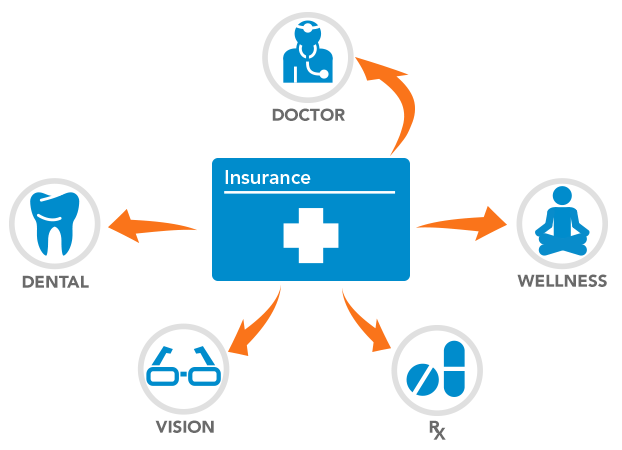
Health (or Medical) Insurance can be very complex. There are copay plans, coinsurance plans, high deductible plans, HSA qualified plans (which are typically high deductible, although not all high deductible plans are HSA qualified), no deductible plans, SHOP plans, Healthy NY plans, community rated plans, experience rated plans, self funded plans, and on and on we go.

What’s right for your business and employees? Sometimes it’s best to offer multiple plans to meet the needs of your employees. For example, you may have management people that get a higher contribution from the employer than, say production people. For the management team, a no deductible platinum or low deductible gold copay plan might be the best option, yet for the production folks, you may want to offer a silver copay plan with a higher deductible and an HRA/FSA combination. The idea here is to offer a lower premium plan to the lower paid workers, yet help them out with meeting deductibles with an HRA, and also allow them to contribute to an FSA with pre-tax dollars. This allows the employees to save money in payroll deductions, and allows the employer to recoup any unspent HRA money at the end of the plan year. Typical HRA utilization is around 60%, so in a good year, 40% of the total money allocated to an HRA gets returned to the employer for the next year. Also, new regulations allow for $500 dollars yearly to be rolled over from the employee FSA, so “use it or lose it” still applies to any amounts over $500.
Of course this is just one example. If you are a larger employer, you may have employees in different states who require completely different insurance carriers for their coverage. Being licensed not only in NY, PA, OH, and several other states, we can accommodate these issues without a problem.
SHOP plans are great for smaller employers looking to get a tax credit on their insurance premiums. Here in NY, enrolling your group on the SHOP gets you up to 50% of your annual premiums in a tax credit. There are some conditions however. From the Healthcare.gov website:
To qualify for the tax credit, all of the following must apply:
- You have fewer than 25 full-time equivalent (FTE) employees
- Your average employee salary is about $50,000 per year or less
- You pay at least 50% of your full-time employees’ premium costs
- You offer coverage to your full-time employees through the SHOP Marketplace. (You don’t have to offer it to dependents or employees working fewer than 30 hours per week to qualify for the tax credit.)
The tax credit is worth up to 50% of your contribution toward your employees’ premium costs (up to 35% for tax-exempt employers).
If your company meets all of these criteria, then it’s probably worth it to check out the SHOP exchange. Our brokers are licensed by the state (in additional to our NYS Health License) to enroll groups on the SHOP exchange. The plans that are offered on the SHOP exchange are identical to the plans off exchange, down to the premiums, copays, and deductibles. Everything must be the same by law. There are some caveats, however. I will list some of the negative aspects of the SHOP exchange here:
- The tax credit is only good for 2 years, and is calculated on a sliding scale. 3 employees total nets you 100% of the 50% tax credit; 24 employees gets you 3.34% of the 50% tax credit. The more employees you have up to 25, the less incentive their is for going onto the SHOP exchange.
- By entering all of your employer/employee data into a state run system, you are giving the state higher visibility to wage, tax, and insurance information (insert tin-foil hat joke here).
- The SHOP exchange enrollment can be more difficult than a normal enrollment since now there is a middle man in between you, your broker, and the insurance carrier. This often results in enrollment problems and group servicing issues.
- Due to the recent exponential premium hikes, some insurers are no longer participating in the state exchanges. One such insurer, Health Republic of New York, closed its doors in late 2015 due to state regulators shutting down the insurer due to financial instability. While unlikely with the remaining carriers, the viability of the SHOP exchange itself is in question.
- It may be wise if indeed the SHOP exchange survives, is to wait until premium increases become a problem. For example, let’s say the average group premium increase is 4.5% annually. Well, what if, due to mandate or otherwise, the premium increase is 19.5% in a year? That would be the year to take advantage of the tax credit, because ideally you would then get a bigger credit due to the increase in premium. So think of the SHOP exchange as a “lower my premiums for 2 years” card…the only issue is when those credits expire, you will have to take on the full weight of whatever premium increase there is. So timing here is key.
For more information on the SHOP, visit this link.
At Integrated Benefit Solutions, we use everything in our arsenal to help mitigate the rising costs of insurance on an annual basis. Sometimes moving a group back a month in the renewal process results in a 4% increase, rather than a 12% increase. Sometimes, renewing for a month in order to move a renewal forward (into a new calendar year) results in lower premiums due to new plan offerings. Again, timing is key here. Having a broker who knows the ins and outs of this industry can pay dividends and keep money where it belongs: invested back into your business.
Click here for a Free Comprehensive Review of you Group Insurance Plan(s)
